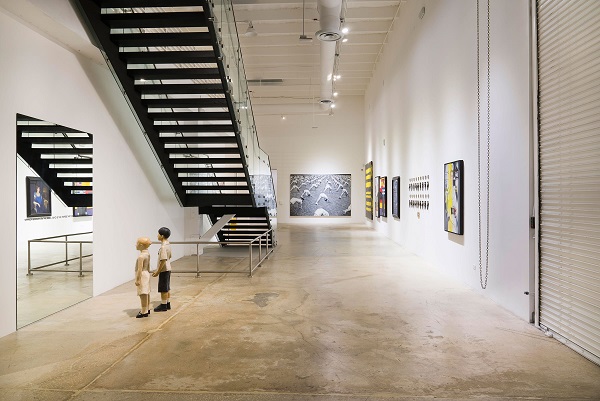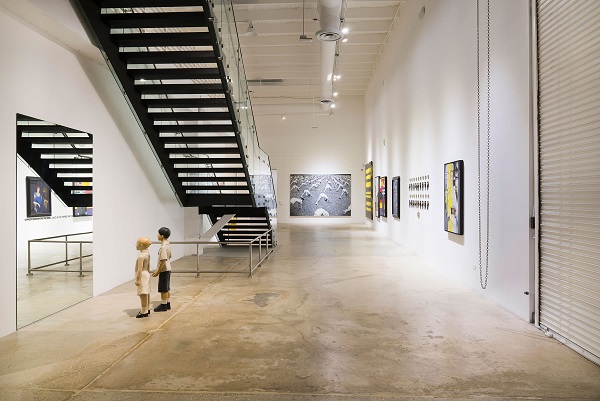
[Many thanks to Peter Jordens for bringing this item to our attention.] Jacoba Urist (Art Basel) writes, “Amid cultural, economic, and political complexities, the country continues to develop as a global epicenter of talent.”
Cuban artists are certainly no stranger to the art history spotlight – from the surrealist terrain of Afro-Caribbean expressionist Wilfredo Lam to the striking, planar vision of Carmen Herrera to the poetic minimalism of Felix Gonzalez-Torres. Still, contemporary Cuban and Cuban diaspora artists remain relatively unsung despite their potent breadth of practice and geographic reach.
‘For being an island in the Caribbean, the artistic production has historically been extraordinary, yet Cuban art is still extremely undervalued,’ says Jorge Pérez, an Argentine American philanthropist. Pérez’s first collection, donated in 2012 to the Pérez Art Museum Miami, included Cuban modernists like Amelia Peláez, Domingo Ramos, and Carlos Enríquez Gómez; last year, his Miami art space El Espacio 23 presented ‘You Know Who You Are: Recent Acquisitions of Cuban Art from the Jorge M. Pérez Collection’.
‘Over the years, we have been very intentional about supporting artists who settled in Miami when there was less support from the international market,’ Pérez continues, ‘artists who left Cuba in the 1980s or earlier, for example, and faced the consequences of living in exile.’
Indeed, much of today’s ballast for the emergent Cuban art scene comes not from bold-named galleries but from Cuban artists themselves. During the 2015 Havana Biennial (the year the U.S. resumed diplomatic relations), Cuban photographer and installation artist Carlos Garaicoa opened a space for his foundation Artista X Artista in Havana’s Miramar neighborhood to help younger Cuban artists. Artista X Artista, Garaciao’s ‘long-cherished dream’, provides a two-way exchange: Artists come to Cuba for a multi-month residency while a Cuban artist works abroad. ‘After the COVID crisis, we suffered a slowdown in our activities,’ Garaciao says. ‘Cuba is in a very complex economic, political, and cultural crisis right now.’
‘There have been certain collectors that have shown an interest, more or less permanently, in Cuban art, but a couple of trees do not make a forest,’ explains José Bedia, a Miami-based Cuban artist who transformed contemporary Cuban painting through his unique anthropological lens. Deeply influenced by indigenous cultures and his most recent trips to northern Thailand and Mongolia, Bedia’s large-scale compositions radiate a neo-primitivistic style. He adds that Latin American countries like Mexico, Colombia, and Brazil elevate their artists, whereas ‘Cuba does not have an economy for this kind of endorsement’ and has promoted a few artists ‘more for political reasons’.
At the same time, a government crackdown on dissent and supply shortages of daily goods holding the country back are inseparable from the aesthetics of Cuba’s iconic voices. Celebrated Cuban artist Tania Bruguera mounts provocative performances, such as the recent restaging of Where Your Ideas Become Civic Action, a 100-hour reading of Hannah Arendt’s 1951 The Origins of Totalitarianism, at Berlin’s Hamburger Bahnhof Museum for Contemporary Art, inviting fellow artists, historians, and political activists to join her. The original work, performed in May 2015 in Cuba, led to her detention by the Cuban authorities.
Using a deceptively ethereal lexicon, Cuban artist Glenda León creates works she describes as ‘symbolic healings’. At SITE Santa Fe, León glued artificial leaves to natural tree branches, indistinguishable from real foliage, an intervention only discernible as seasons change when her leaves are evergreen. ‘I’m interested in listening with the eyes as with the ears,’ she says. ‘One of the main problems we currently face is that we don’t listen to the earth or to ourselves.’
Meanwhile, at Art Omi in Ghent, New York, Cuban-born artist Alexandre Arrechea’s Orange Functional (2022) finds bright orange branches blossoming into basketball hoops (his public art has also graced Park Avenue and Coachella music festival). For others, physical materials come literally from Cuba’s landscape. Sculptor Yoan Capote, who had his first solo exhibition last spring at Ben Brown Fine Arts’ Palm Beach location, describes his series ‘Litoral’ (2022): ‘I’m working with stone I have been extracting from the coast of Cuba – diente de perro,’ he explains. ‘This kind of rock receives a constant impact from the sea. Their texture is very beautiful and aggressive.’
‘There are collectors who collect because of their relationship to the material. They love it, think it’s beautiful, and are interested in its cultural history. And then there are collectors who collect based on investment and the possibility of future gain,’ says Shelley Rubin, founder of the Rubin Museum of Art as well as The 8th Floor, an exhibition space dedicated to social change. She is also a prominent collector of Cuban artists, such as Manuel Mendive, Clara Morera, and José Bedia. But, Rubin continues, ‘to create a sustained market for the art from a particular region like Cuba, there needs to be a sympathetic relationship between these two aspects of collecting.’
For full photo gallery and original article, see https://www.artbasel.com/stories/cuban-art-market-jorge-perez-carlos-garaciao-jose-bedia-tania-bruguera
[Shown above: Installation view of ‘You Know Who You Are: Recent Acquisitions of Cuban Art from the Jorge M. Pérez Collection’, El Espacio 23. Photograph by Business Wire.]
[Many thanks to Peter Jordens for bringing this item to our attention.] Jacoba Urist (Art Basel) writes, “Amid cultural, economic, and political complexities, the country continues to develop as a global epicenter of talent.” Cuban artists are certainly no stranger to the art history spotlight – from the surrealist terrain of Afro-Caribbean expressionist Wilfredo Lam to the







